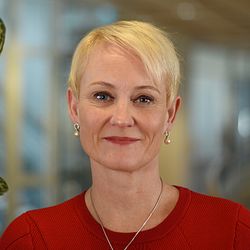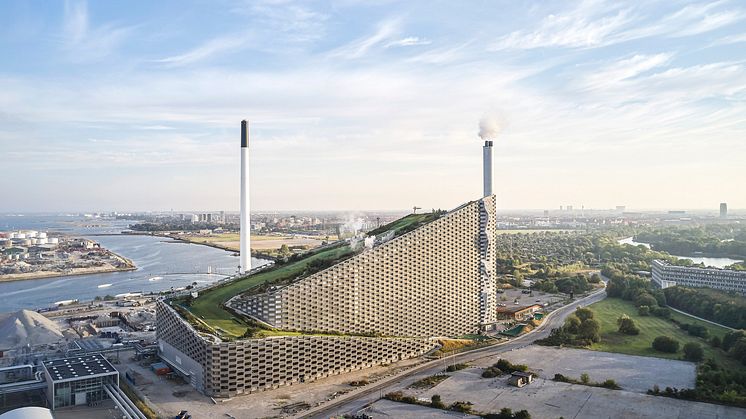
Press release -
The capital city’s largest utility companies want to work together to capture 3 million tonnes of CO2 a year – but this requires political action now
With the C4 cluster, a number of major utility companies in the Copenhagen metropolitan area seek to make carbon capture a crucial element in the green transition in Denmark. CO2 reductions of around 3 million tonnes per year are possible, if the Danish Parliament shows the requisite political will.
The climate crisis requires action, now. Therefore several major energy companies in the Copenhagen metropolitan area are becoming engaged in the fight to respond to climate change, with joint efforts in C4 – Carbon Capture Cluster Copenhagen. The collaborative project consists of several large utilities, which together can establish a substantial and durable effect on the green transition.
The objective is to capture CO2 at a number of large energy plants and save the atmosphere from these CO2 emissions.
“There is enormous potential in these joint efforts concerning the C4 consortium. We have realistic possibilities to establish CO2 reductions of around 3 million tonnes per year with carbon capture,” notes CEO Jacob H. Simonsen from ARC, and continues:
”This corresponds to approximately 15% of the total Danish target for reduction of 70% by the year 2030, and could be one of the largest single contributions to the green transition in Denmark.”
Capturing the CO2 from a number of large energy plants and either storing it or converting it into green fuels will both reduce CO2 emissions and establish green solutions for sectors that cannot be immediately electrified. These possibilities need to be explored further, to see the extent to which this could become an important contribution to achieving Denmark’s climate goals.
Therefore, a consortium
Capturing CO2 is not sufficient enough. The CO2 must also be transported and safely stored underground, and can eventually it can be converted into green fuels. The Copenhagen metropolitan area is particularly suitable for establishing carbon capture and storage facilities because there are a number of large energy companies in relatively close proximity to each other, which facilitates better possibilities for a joint infrastructure, to the port on Prøvestenen for instance, from where the CO2 can be shipped.
The parties in C4 will work to examine and, if possible realise, the vision of capturing and storing/exploiting large amounts of CO2 in the Copenhagen metropolitan area.
The parties are thus forming the C4 cluster in order to contribute positively to solving the climate change challenge.
The intention is initially to ensure that knowledge and insight into the work relating to carbon capture is shared and utilised mutually, while exploring and cataloguing the possibilities for establishing common solutions. When more stakeholders share the infrastructure, it becomes less expensive, all for the benefit of the green transition. At the same time, significant economies of scale can be reaped from the capture, storage and utilisation of CO2.
The way further forward
If the C4 consortium’s vision for significant reductions of CO2 in the Copenhagen metropolitan area is to be realised, this requires the requisite determination of the Danish Parliament.
“If we are to attain our goal with the vision relating to CO2 reductions in the millions, so many stones must be cleared out of the way politically. The future national strategy for the capture, storage and use of CO2 (The CCUS Strategy) will ensure the requisite funding and address important issues relating to the transport and storage of the CO2,” remarks Jacob H. Simonsen, and says in conclusion:
“In the short term, we would urge the Danish central government to allocate the requisite funds so that GEUS1 can investigate whether the various different Danish formations are feasible for CO2 storage.”
With the right political priorities, it is certainly possible to achieve large reductions in CO2, at an attractive price. And some C4 consortium members are already up and running. Most recently, Vestforbrænding has announced an ambition to capture 450,000 tonnes of CO2 per year from the year 2030.
As the C4 consortium becomes better known and we begin to put on our work clothes, we will make a vitally important crucial difference to the green transition in Denmark.
* GEUS, an internationally oriented, independent research and advisory institution within the Danish Ministry of Climate, Energy and Utilities, is a geological data centre which conducts surveys, research, consulting and cataloguing primarily in Denmark including Greenland.
Brief facts:
Those behind the C4 consortium project are ARC, ARGO, BIOFOS, Copenhagen Malmö Port (CMP), CTR, HOFOR, Vestforbrænding, VEKS and Ørsted.
For further information, contact:
Contact ARC’s Head of Communications Nils Thor Rosted, (45) 2925 7240, nitr@a-r-c.dk

